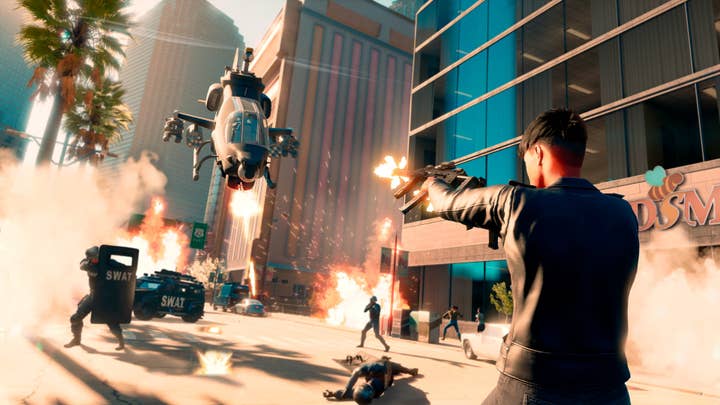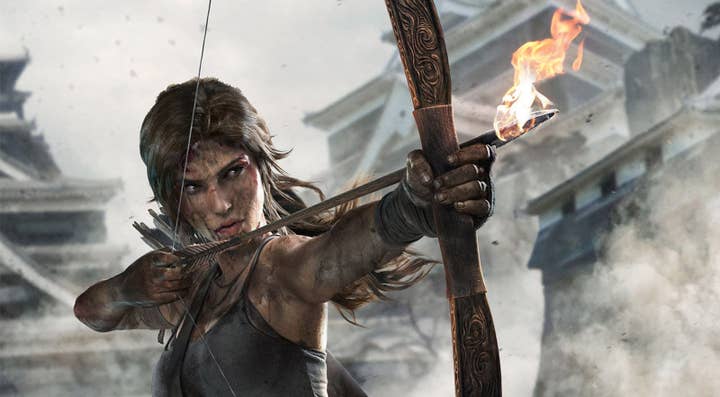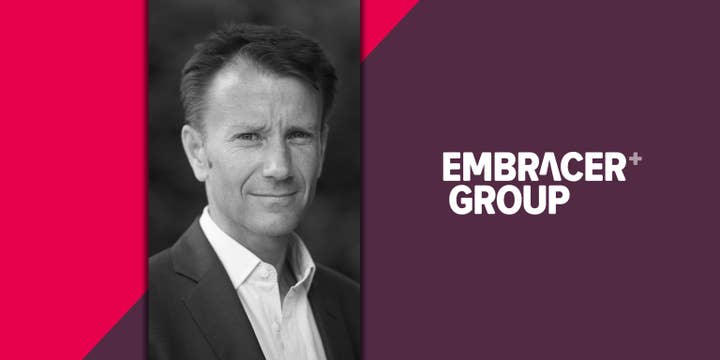Embracer: Human cost of restructure is "significant" but "necessary"
Phil Rogers discusses the group's goals and progress following the dismissal of more than 900 staff
Sign up for the GI Daily here to get the biggest news straight to your inbox
To say it's been a rough year for the games industry's workforce is putting it mildly; thousands of jobs have been lost as companies restructure and downsize following rapid growth during the onset of the pandemic.
Perhaps this is most prominently demonstrated by the ongoing restructure of Embracer Group, where expansion was not limited to the last few years. Since 2017, the company has acquired almost 90 businesses, ranging from smaller developers like Zen Studios, to AAA studios such as Gearbox and Crystal Dynamics, to non-games firms like tabletop leader Asmodee, comics publisher Dark Horse Media, and even Lord of the Rings owner Middle-Earth Enterprises.
The industry has been watching Embracer carefully, waiting to see if its Jenga tower of M&A purchases will eventually topple – and that moment seemed to arrive earlier this year after the group announced a deal expected to be worth at least $2 billion had collapsed due to the last-minute withdrawal of its unknown partner.
The restructuring program, along with plans to reduce the company's net debt of $1.5 billion, began in June and Embracer gave its first significant progress update alongside its financial results last week. That debt had been reduced to $1.4 billion, with the group saying it was on track to bring it down to $757 million by the end of the fiscal year in March 2024.
The restructure has primarily been in the PC/console areas of the business, with Embracer's financial report stating that the stability and predictability of the mobile, tabletop and entertainment segments have bolsetered their results. However, Board Game Wire reports the restructuring process has also begun at tabletop firm Asmodee.
The human cost of Embracer's debt reduction has been steep. 904 people were laid off between July 1 and September 30, with more dismissed since due to redundancies at three more of its studios across October and November. And there's more to come.
In the wake of the results, we speak with Embracer's Phil Rogers, interim chief strategy officer and CEO of the operating group that includes Crystal Dynamics and the other Western studios previously owned by Square Enix, where Rogers worked until last year's acquisition.
Rogers points to the status of the overall restructure, reiterating the financial reports' perspective that Embracer is "making good progress."
"I think these sort of reporting dates are good times to stand up and sort of say, you know, how do we feel we're doing against it? We feel good," he tells GamesIndustry.biz. "We feel like we're on track against our targets that we've set out. So we feel very positive about that.
"We're in line with our targets on how we bring the debt down, with [operating expenses] savings and the targets for our capital expenditure, which is basically our games pipeline. And obviously we're going to readjust that games pipeline down to the run rate we talk about is SEK 5 billion ($478.4 million) going into next fiscal year. Those adjustments are very, very clear and well understood targets for us. So I think we're making good progress against that."
He goes on to say that restructuring can be introspective for a company, giving great consideration to the business' goals, ambitions and, as Rogers puts it, "how we win."
"We talk about how we improve our efficiency, our cash generation. How do we transform ourselves into a leaner, stronger, more focused and – critically – cash self-sufficient company? And I think these have been really good challenges for the whole business to lean into. It's got a lot of good conversations going across the business."
That said, Rogers recognises the human cost of this process. "There's a lot of it going around the industry at the moment of restructuring, but the downside, obviously, is the impact on people. It's something that really Embracer feels for.
"It's been agonising to see the headcount [reduction], but it's necessary for us to hit our new and needed goals"
He continues: "It's been an agonising process to see the sort of headcount [reduction], but we know it's a necessary thing for us to hit our new and needed goals. So overall, good progress and we push on."
Rogers echoes Embracer's previous announcement that it would do a complete review of its global pipeline, which is "a big pipeline." That's no understatement: as recently as June 2023, Embracer announced it has over 200 games in development across its various studios.
"Embracer has got one of the broadest and deepest games pipeline in the industry, I think," Rogers says. "It was very interesting [in the review] to get experts and eyes from all across the different operating units and really work together on one project, to look at our pipeline and work out how we assess it all, what we think about it.
"It got a lot of people introduced to one another, people who've been working in different parts of the group to actually build up their networks and whatnot and get a lot of communication going. So I think there's been a lot of positives from that overall programme."
It's an unusual time to be conducting such a review. 2023 is a year in which the biggest games – Zelda, Hogwarts Legacy, Diablo, Spider-Man, etc – are performing better than ever, while more and more players are pouring the majority of their time into live services. It seems harder than ever to have a hit outside the AAA space, which is where the majority of Embracer's studios operate. Even its biggest release in years, the 2022 revival of Saints Row, failed to meet expectations.
In such a climate, how does a business decide which of its 200+ in-development games are worth continuing?

"First and foremost, we look at entertainment values," says Rogers. "It has to be fun to play. I'm never a big fan of the 'fewer bigger, better' [approach]. Bigger games aren't always fun. I know how hard it is to make smaller games and to bring those entertainment values to bear from experience at Crystal when we started working on digital spin-outs of Lara Croft. For Lara Croft and the Temple of Osiris, that was a AAA team trying to make a game with much, much smaller budgets. So many teams are producing games today for much, much smaller budgets.
"Then we do look at how we would assess the commercial outcomes, how we squint and would see those returns. There's the potential for genres as well, where we've got overlap in potential genres or whatnot… That would help us make some decisions. "It also helps us explain decisions with teams. One of the softer but very clear advantages of going through this process I found is it really has got teams to work together to share, to discuss, and that's helped us then with those decisions when we've had to deliver them."
Embracer also has spent much of the past five months reassessing the inefficiencies that brought the business to this point. From the outside in, it's fairly easy to suggest an aggressive M&A strategy of nearly 90 purchases in six years is the primary factor – especially without major hits from the studios it does own to help sustain a group of this size.
"[Embracer's] emergence amongst the leadership in the industry has been a very fast ascent"
For Rogers, that strategy was built on the ambition to position Embracer as an industry leader and the company wants to maintain that leadership position.
"Establishing ourselves within the the industry… [Embracer is] a relatively new player, but then in other aspects, Embracer has been around for a while," he says. "But its emergence amongst the leadership in the industry has been a very fast ascent."
Rogers brings an interesting perspective to the matter. Having only joined Embracer last year, he saw that very fast ascent from an external point of view, and now he's seeing the next chapter internally. When asked what led Embracer to this point, he relates it to the wider games business and its rapid growth.
"We're a super-confident industry, a boundary-pushing industry," he explains. "I joined in 1999 with the belief that physics middleware was gonna revolutionise gameplay, and now I realise it's just a component of how games are designed and enjoyed. This is an industry that's always taking on and facing challenges, always looking for opportunities, entertaining billions of people around the world, and it's growing…I think I recognise all of that within Embracer."
He continues: "[But] part of that confidence means that at times, we have to change and adapt. You know, the macro forces and micro forces. I think that's the situation that the industry is in right now. We've taken on a lot, but it's in that pursuit to change and evolve and grow, and now we're just in that different climate. And I think that maps across absolutely with Embracer. It is a very confident and can-do organisation, but now we just got to face some of the realities of how we can work in a more efficient way."
We bring the conversation back to what the group's goals are, what 'winning' looks like to Embracer, to which Rogers responds: "These are all questions we are going to come back to and address in full. We're very focused right now on the restructuring, So I don't think these are questions we are in a position to answer today. He continues "We are very focused on the restructuring. I think it is a very galvanising time for us. Personally, I think we learn more about ourselves in tough times. It's when you really have to think deeply and without any complacency. And I said today, we try and bring people together in this focused programme now, and [we] will come out with that meta vision as we get into 2024."

As Embracer stated in its financial report, the restructure is still in its "early stages," which means more layoffs and studio closures are expected. How many more is still unclear.
"It's always a tricky question," says Rogers. "We report to the quarter, and we're mindful that the operative groups are making changes. Some of that makes the news, and some of it doesn't. We don't comment on that, but we will report on it as we get to those quarterly measurement dates, so the next time will be in February.
"The people cost is significant, and we have to handle that always with that respect and integrity"
"Our priorities are… very much keeping a focus on working together, keeping eyes on the goal at a project level. We have announced that we expect more restructuring and some more cancellations, potentially some more closures or management buyouts. That's the balance we've got to take internally… Because, as we say, the people cost is significant, and it's significant to us and we have to handle that always with that respect and integrity."
Rogers concludes by reiterating that Embracer is very much focused on looking forward, and while it's adjusting how it operates, the company's long-term vision is still unchanged.
"We have a solid foundation with predictable, profitable, and cash-generative businesses, including a roster of renowned PC/Console franchises that gradually grow stronger," he says. "The demand for content has never been greater, and we are well-positioned to leverage that demand. We have fantastic people and many world-class IPs, and we aim to demonstrate the growing earnings power of this combination over time."
Sign up for the GI Daily here to get the biggest news straight to your inbox

